With wooden trim
One of the most popular solutions is to use wood in the design: this way the extension is a single whole with the wooden house. Natural material is used in the manufacture of the canopy, supports, fences and floor; it is covered with special impregnations that protect the surfaces from moisture and decay.
Wood is a fertile material that gives the veranda a cozy look. It allows you to arrange the room in a rustic style, add notes of retro or classics. Wooden paneling looks appropriate against the backdrop of nature and goes well with greenery.
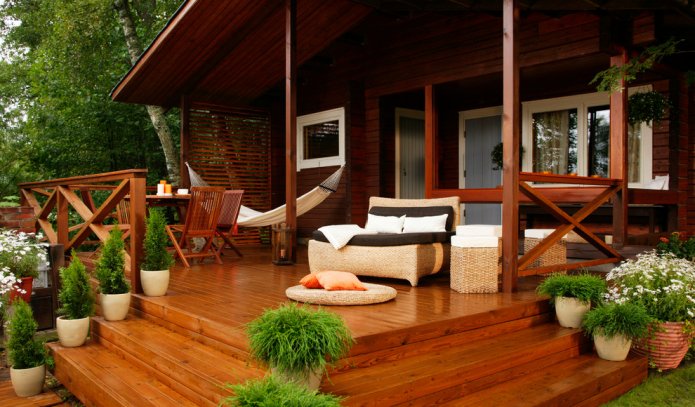
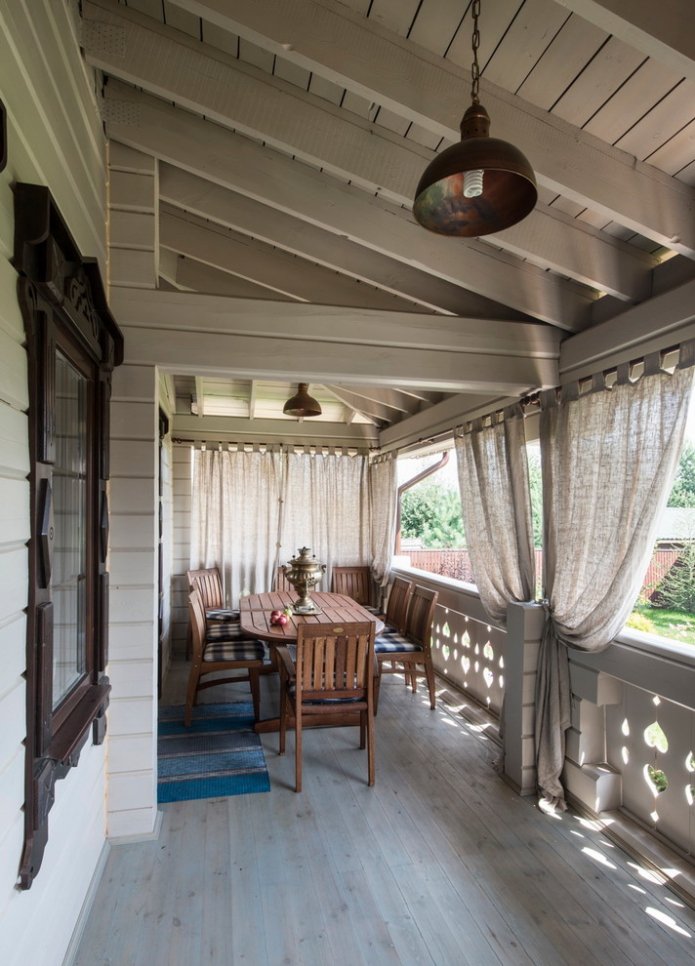
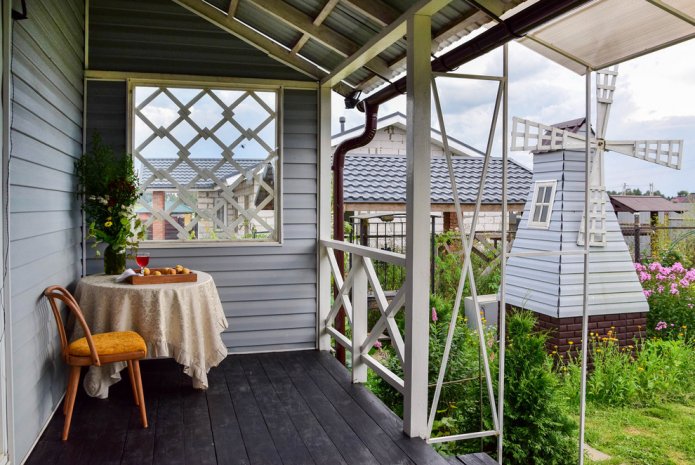
Summer kitchen and brick walls
In private houses, where people live all year round, a brick veranda is a capital extension, additionally insulated and often glazed. It is used not only for relaxation, but also filled with functionality, equipping the kitchen with an oven, grill and plumbing.
The spacious room is divided into two zones: a place for cooking and eating. The veranda is equipped with a roomy table, benches and chairs, transforming into a full-fledged kitchen with a cozy dining room in the warm months.
Brick finishing, so popular in recent years, will not go out of fashion for a long time. A veranda decorated with brick looks reliable and brutal, but this severity can be easily softened with curtains, pillows and flowering plants in floor vases.
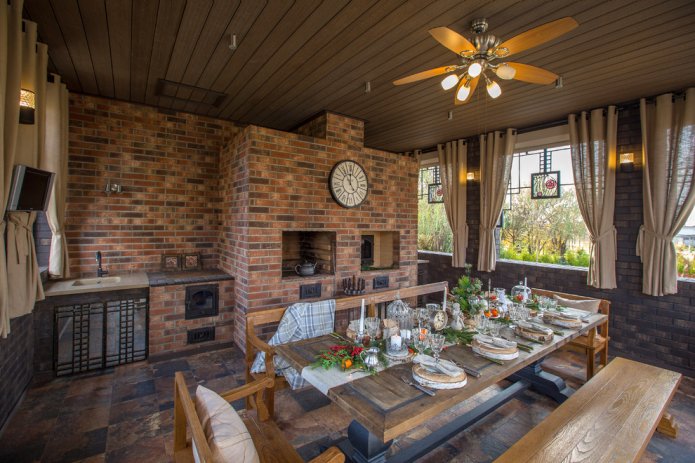
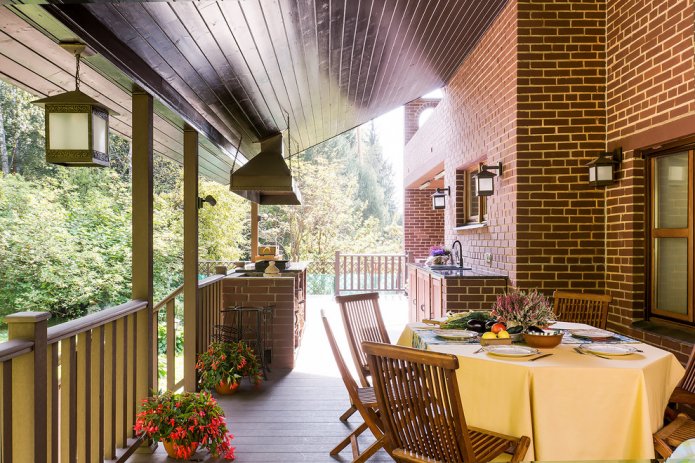
With wicker furniture
A house decorated with light siding is an ideal background for creating a veranda in the American style. Let your extension become the embodiment of freedom and ease. The recipe is simple: in addition to white, blue or light gray walls, you will need wicker furniture and cozy textiles. These can be chairs made of natural or artificial rattan, a sofa, pillows and warm blankets.
For flooring, it is better to use durable decking boards made specifically for the street.

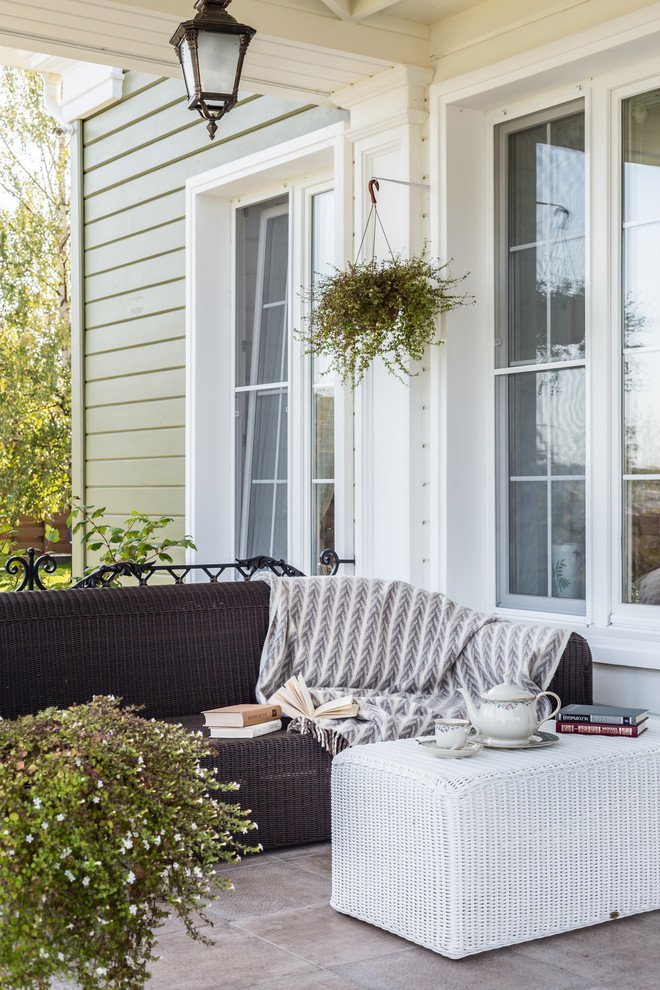
Veranda as a room
A solution for those who want to expand the total area of the house and get another useful room. Unfortunately, it will not be possible to turn the extension into a full-fledged room where you can live in winter. To get closer to the goal, it is necessary to install a heating and ventilation system with the consent of the relevant authorities. But some of the heat will still be lost – the large area of glazing and the lack of insulation have an effect.
But nothing prevents you from turning the veranda into a bedroom or living room for the summer holidays: you just need to furnish it with traditional furniture (table, bed), decorate it with plants and decor. Sleeping in the fresh air among nature is not only romantic, but also healthy.
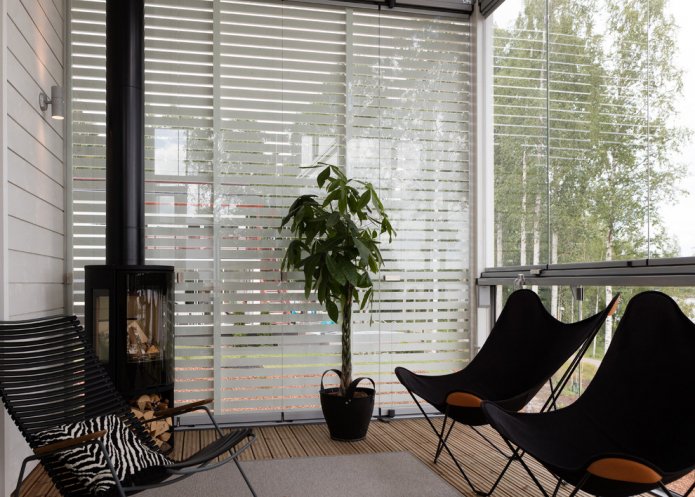
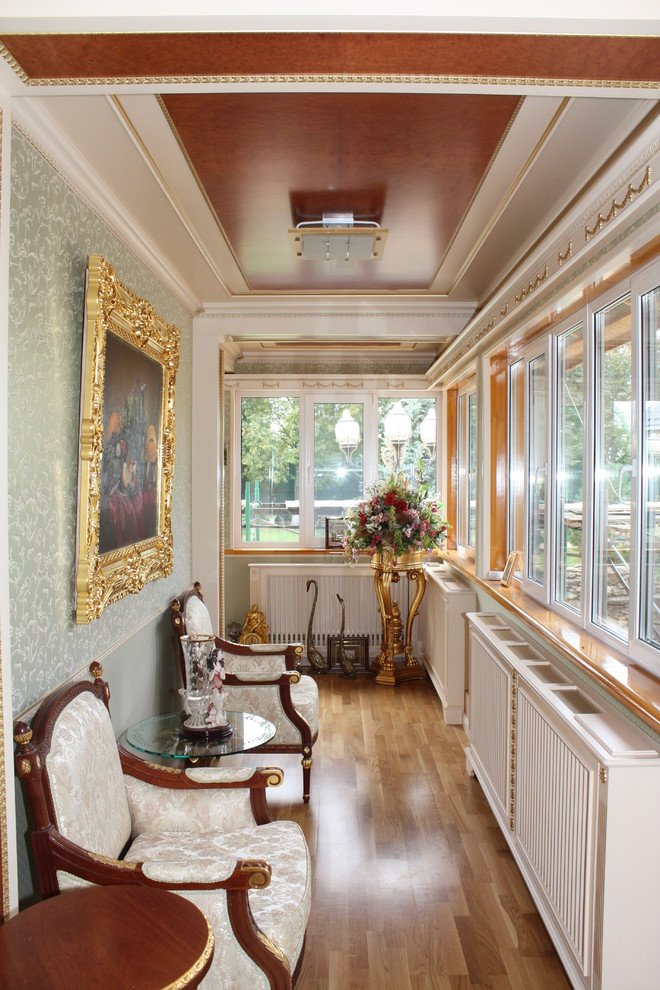
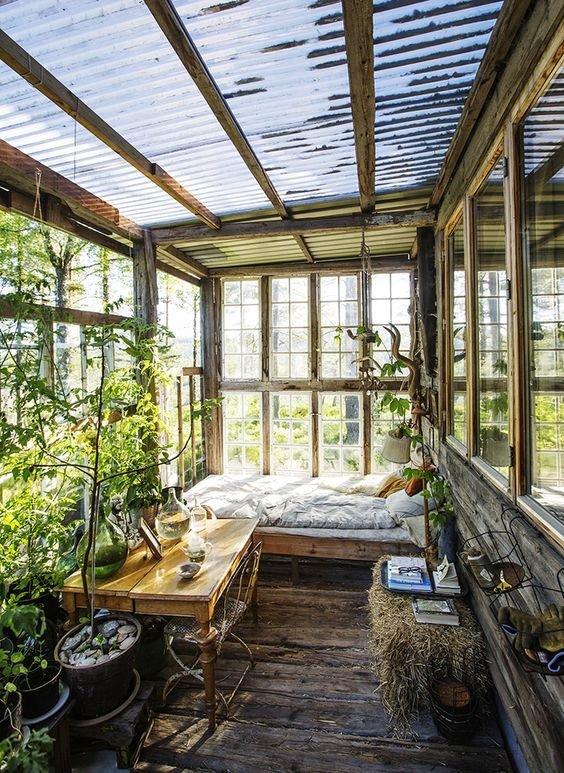
Among the plants
If you like to grow indoor flowers, setting aside an extension for a greenhouse will be a great option. Equip the veranda with curtains to regulate the temperature and amount of sunlight, arrange the pots on shelves and racks, arrange a place to store watering cans and garden tools.
An extension on the eastern side is safe from overheating, so it is ideal for the growth and development of plants. If you are arranging a real winter garden, you need to carefully consider the heating, watering and ventilation system.
Surrounded by green plants, including exotic ones, it is pleasant to relax after a hard day, read or have tea. Put a sofa or bench in your greenhouse, as well as a small table. Another nice detail that can give comfort is a hanging garden chair.

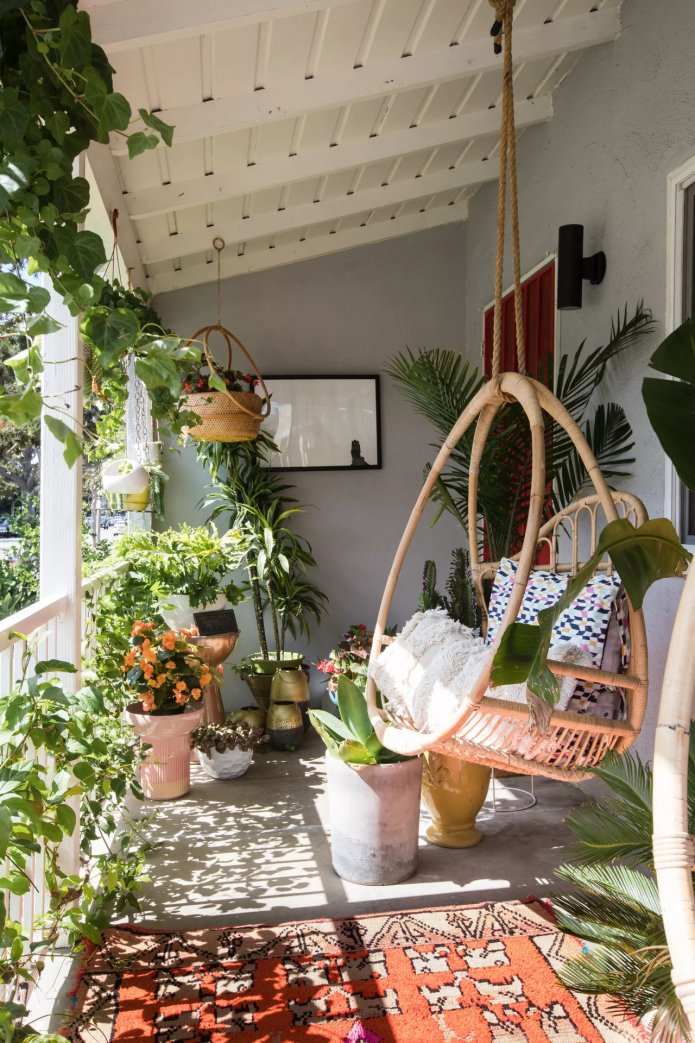
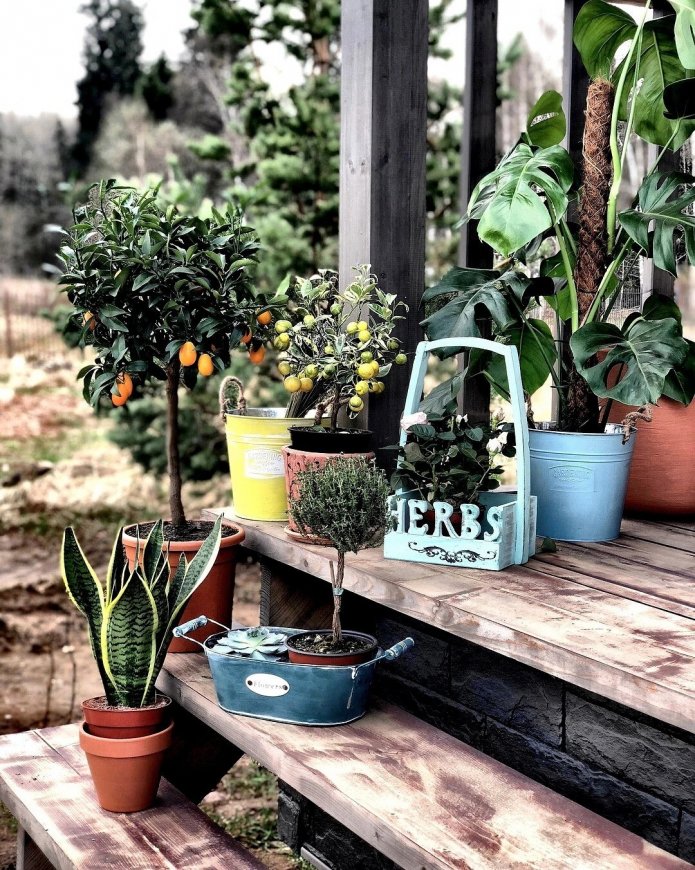
С textile decoration
Since the veranda assumes a large amount of sunlight, it is important to complement it with floor-length curtains. Light fabrics are suitable for a glazed extension – they diffuse the rays, creating a small shadow, and provide privacy.
If there is no glazing, curtains made of a special material that repels dirt and water will be an excellent solution. They are easy to maintain and can protect furniture left on the veranda from rain and wind.
Choose white or beige plain textiles for your summer cottage extension to visually expand the space and not deprive the room of its main advantage – good lighting.
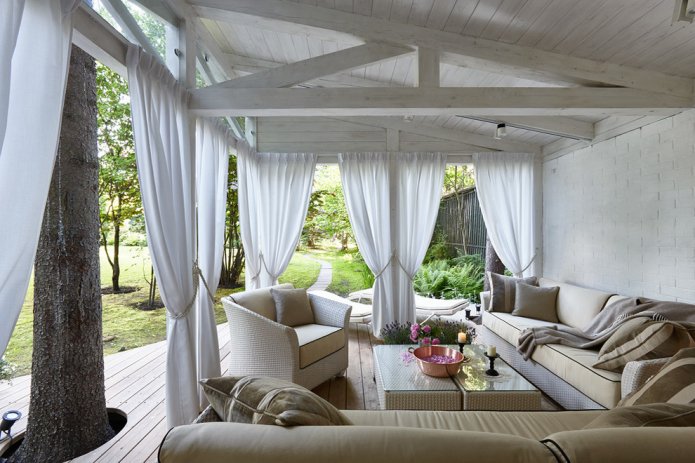
A place for conversation
A large veranda can easily be transformed into a space for small parties or a corner for intimate conversations. You will need comfortable seating: a soft sofa, a bench with cushions, ottomans or an armchair – for example, a hanging one or a “rocking chair”.
Thoughtful lighting will allow you to sit outside until late – for some it is enough to hang garlands that are charged by sunlight, and for others, full-fledged lamps for outdoor use that operate on electricity.
Furniture for the extension can be made with your own hands, using wooden pallets and foam cushions. With due diligence, a hanging chair can be woven using the macrame technique from polyester cord and two hoops.
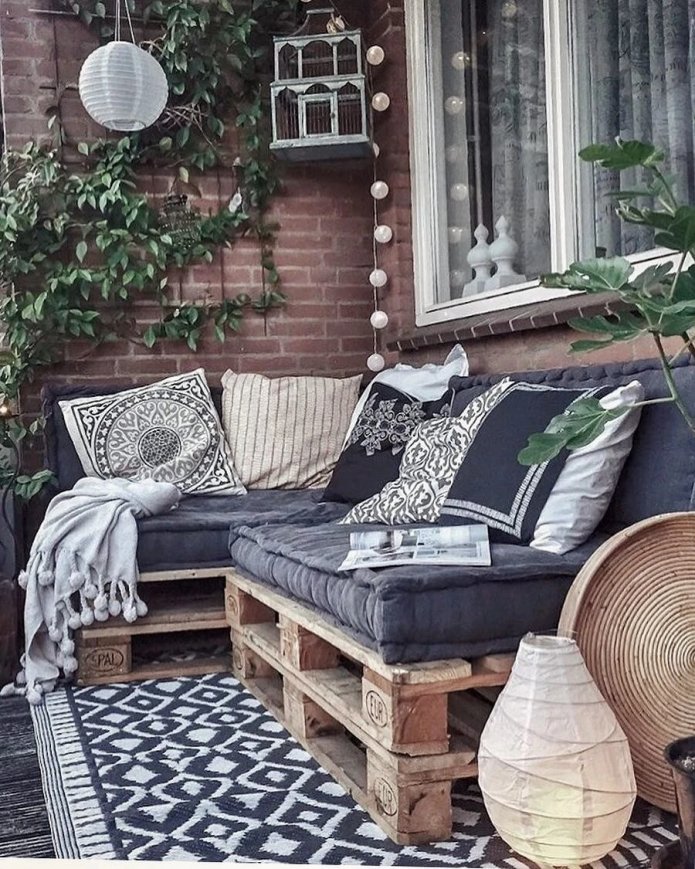

Without a roof
An open veranda often becomes an extension of the porch. As a rule, it is equipped with railings, but does not have a canopy. Such a space can be used for sunbathing, installing chaise lounges or a hammock on a support. A small mobile pool would also be appropriate.
As an alternative to a full-fledged roof, a beach umbrella, canopy or awning can be used to create shade. They are easy to move around the area and put away in case of bad weather.
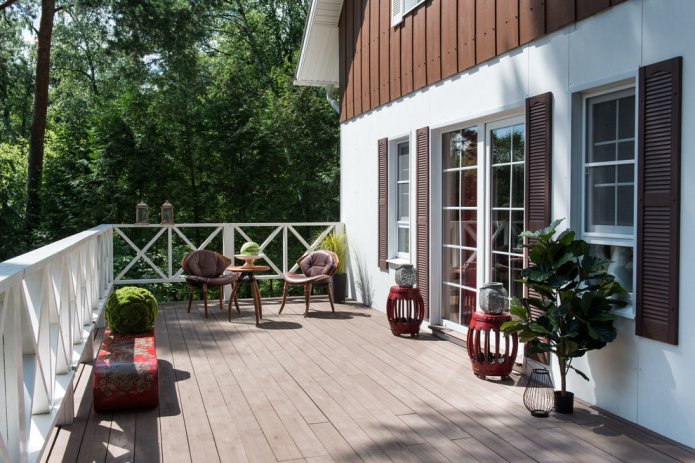
In Russian style
If the house is made of logs, a veranda in a rural style will be its logical continuation. The massive material should be balanced with light furniture on thin legs – wooden or metal.
The interior of the room should be complemented with natural textiles in warm colors and decor from household items of ordinary villagers. Woven rugs, baskets, pillows and tablecloths with ornaments and embroidery are appropriate.
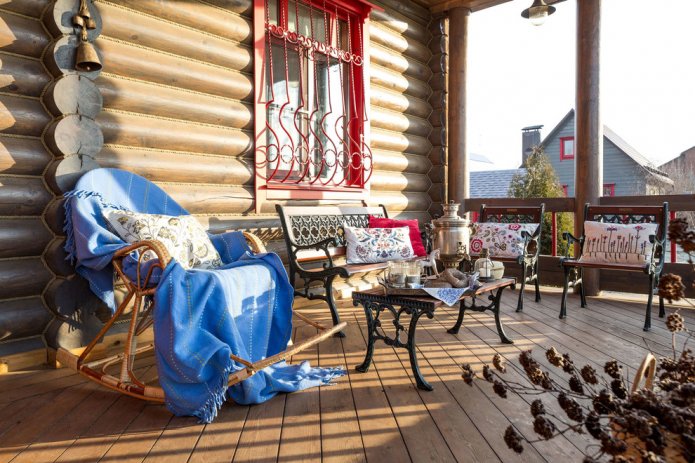
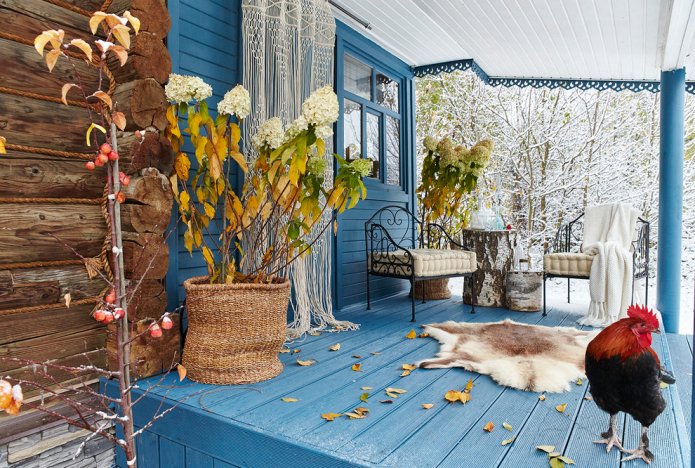
With a swing
A hanging bench-swing is a great alternative to a simple sofa on legs. Today, they can be bought in many hypermarkets or made by hand. The frame of a ready-made swing is usually made of metal, and homemade furniture can easily be made from wooden beams and slats, hanging it on a solid base. The canopy and fastening must withstand increased loads.
The swing creates a harmonious ensemble with other furniture – armchairs and benches, as well as bright pillows and rugs.
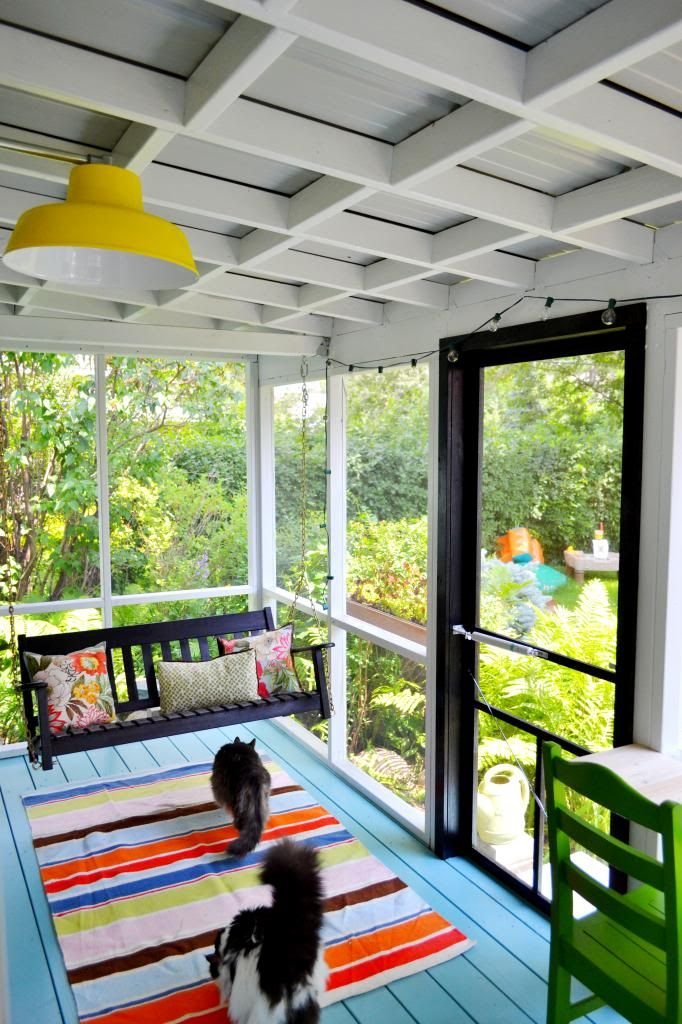
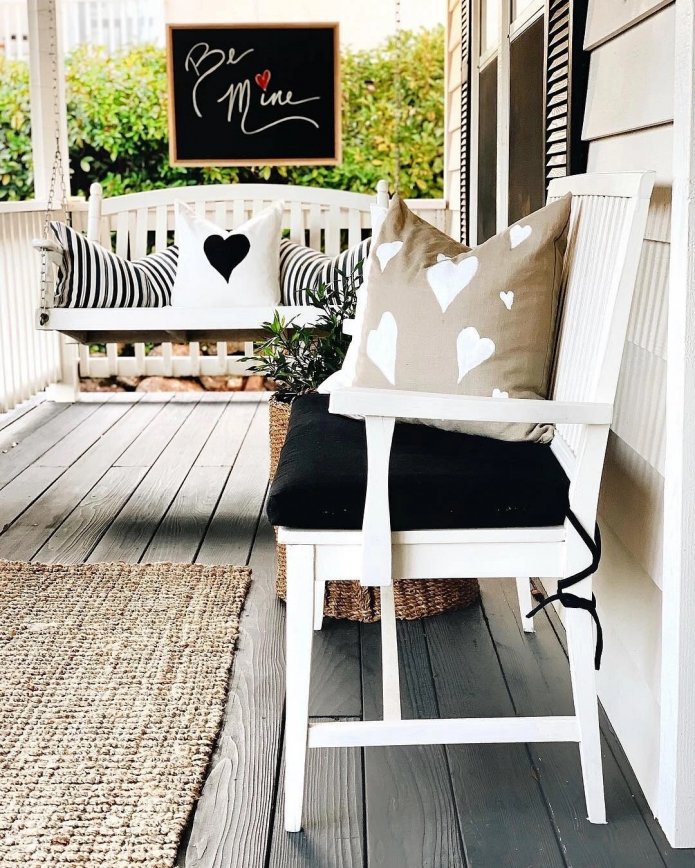
The veranda is a special place: not yet a street, but no longer a house. Regardless of size, it can be aesthetic and functional, the main thing is to approach the design with taste.